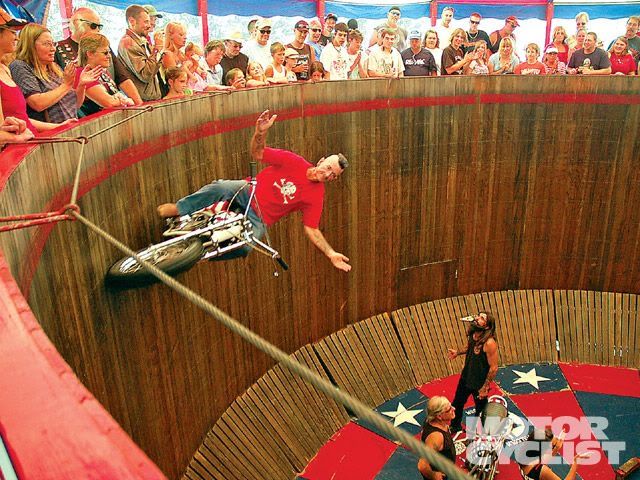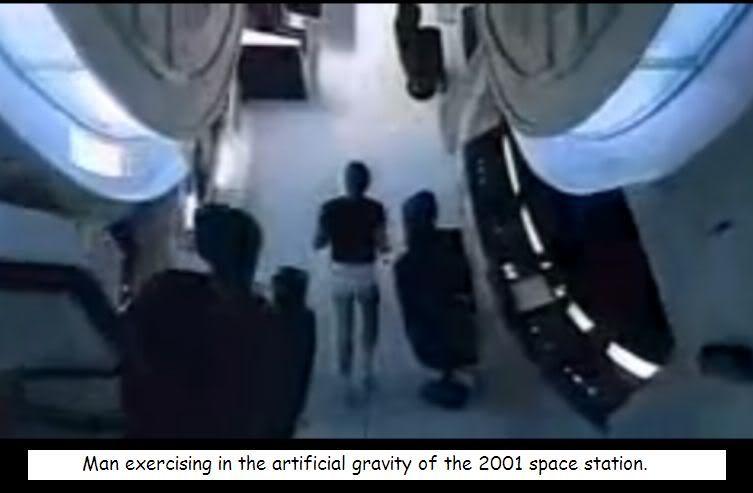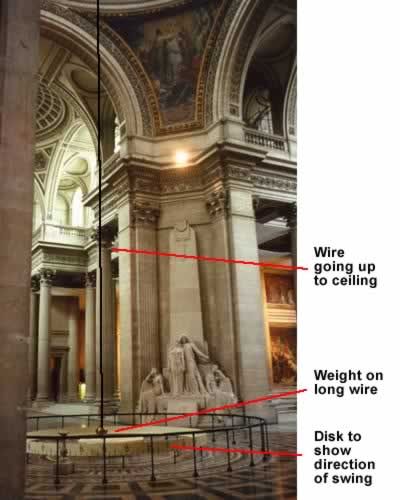Bruce Welsh is an electronics engineer with the open spirit which has been devoted to alternative energies for twenty years. It is convinced that one can build machines with on-unit.
He had an uncle who liked to arrange, to invent. One day, old Bruce of seven or eight years, returned visit to the uncle who showed to the grandfather the new play that it had made for his children (it had six of them).
The play made in the sixty centimetres height for a base of thirty centimetres square. It consisted of a slope in spiral of three turns and half. At the bottom of the slope a paddle wheel, connected by some gears to an elevator was placed going up to the top of the play where a hopper furnished with ten balls was. An opening to rocker in the hopper made it possible to let pass, one by one the balls which went down the slope into three to five seconds.
The ball touched the paddle wheel what gave a small upswing which released another ball whereas the first was on the elevator and went towards the hopper. And so on.
There were five balls at the same time on the elevator and the once launched play did not stop any more. To begin, all the balls were to be in the hopper and Bruce remembers to be thundered by the uncle because it had touched the paddle wheel, thus stopping the play started again soon by the uncle. And, several hours after, the play always functioned.
Did the uncle know that it had violated the laws of physics?
Its descendants do not know any more what became this play, it is probable that the uncle in recovered the parts as it was its practice to rebuild another thing, unless it does not sleep yet in an old farm, in dust… They do not remember either to have seen other apparatuses functioning in an autonomous way, nor of engine on the play, but know that the play had stopped afterwards weeks and simply set out again after being cleaned.
Foot-note: the slope in spiral is indeed a vortex and it seems that in a certain way the vortices add energy, one unceasingly finds them in many ideas related to on-unit.
(KeelyNet source of the 14/12/97)
===============================================
Posted: 25th May 2009, 10:01 pm Post subject: re: Serendipity
Fletcher put the above question to me a year ago. Since then I have had plenty of time to think about it and the discussions I have had with my builder (Vina1) have helped me to formulate the answer, which is yes, a Bernoulli vortex spiral is different from an ordinary straight incline.Fletcher wrote:...
So I guess I'm asking Grimer is a Bernoulli vortex spiral any different from an ordinary straight incline ?
I suppose the simplest explanation is that the spiral forces the falling ball towards the centre which implies work being done on the ball which has to appear in some form or other. The fact that work is being done is seen more easily if the section on which the ball is sitting and which is pushing the ball towards the centre is replaced by a string pulling the ball towards the centre. If one pulls the ball towards the centre then the ball will rise against gravity thus showing that work is being done on the ball.
So it seems possible that work done on the ball by the vortex spiral is leading to an increase in velocity, in KE, over that which would be obtained by a straight drop or a drop down a slope which is straight in plan.
Let's explore the matter further.
Consider the following diagram which shows a ultra heavy globe, earth mass say, being dropped on a roller mounted wedge slope with a height to horizontal length ratio of 1:4. Let the mass of the slope be negligible and the coefficient of friction between the globe and the slope approach zero.
Now the globe will fall vertically under gravity and squeeze the slope out as it does so. The horizontal velocity of the slope will be four times the vertical velocity of the earth mass
This means that the when the ball reaches the rollers the velocity of the slope will be four times the velocity it would have had if it had fallen vertically the same distance as that fallen by the ball.
Now what is taking place in the case of the vortex spiral and a ball-bearing is the inverse of the above. It is the vortex spiral attached to the mass of the earth which the high inertia object corresponding to the heavy globe and the ball-bearing which corresponds to the wedge being squeezed.
Another way of looking at it is to see the ball bearing as being a rider on the wall of death as it enters the steepest section of the vortex. In effect the riders are kept in place by the action of ersatz gravity .....

..... which exerts a greater force on the rider than natural gravity. For slopes below 45 degrees natural gravity dominates ersatz gravity. For slopes greater than 45 degrees it is the other way around.
The concept of artificial gravity will be familiar to all 2001 fans as the way is which gravity is simulated on a space station.

So Uncle Welsh had the action of natural gravity boosted by the action of ersatz gravity and this is how he managed to get a continuous flow of marbles around his toy.
From what I remember of vortex flow in liquids the speed of flow steadily increases until it reaches the velocity of sound whereupon the remaining central core revolves as a solid cylinder.
This fits comfortably with the above interpretation.
How on earth has this been missed. The answer is it hasn't. Bessler didn't miss it. Keenie didn't miss it and Bruce's uncle didn't miss it either.
Also, one has to bear in mind the way science has progressed over the twentieth century. Simone Weil, had the situation bang to rights when in her essay, "La Science et nous" she wrote,
========================================
What is disastrous is not the rejection of classical science but the way it has been rejected. It is wrongly believed it could progress indefinitely and it ran into a dead end about the year 1900; but scientists failed to stop at the same time in order to contemplate and reflect upon the barrier, they did not try to describe it and define it and, having taken it into account, to draw some general conclusion from it; instead they rushed violently past it, leaving classical science behind them.
And why should we be surprised at this? For are they not paid to forge continually ahead? Nobody advances in his career, or reputation, or gets a Nobel prize, by standing still. To cease voluntarily from forging ahead, any brilliantly gifted scientist would need to be a saint or a hero, and why should he be a saint or a hero? With rare exceptions there are none to be found among the members of other professions.
So the scientists forged ahead without revising anything, because any revision would have seemed a retrogression; they merely made an addition.
========================================


